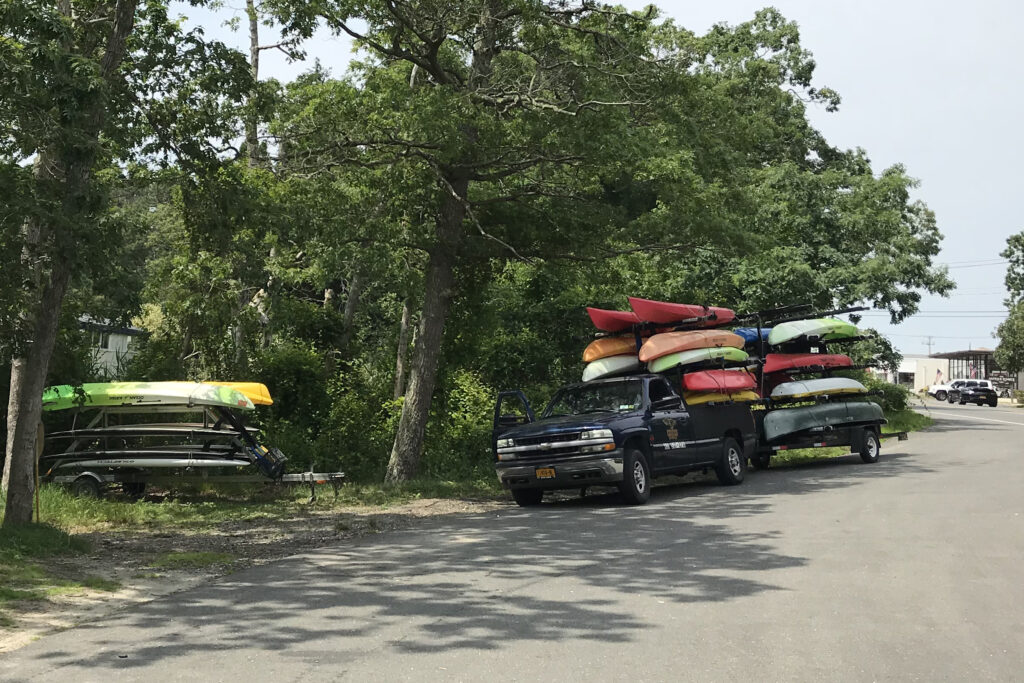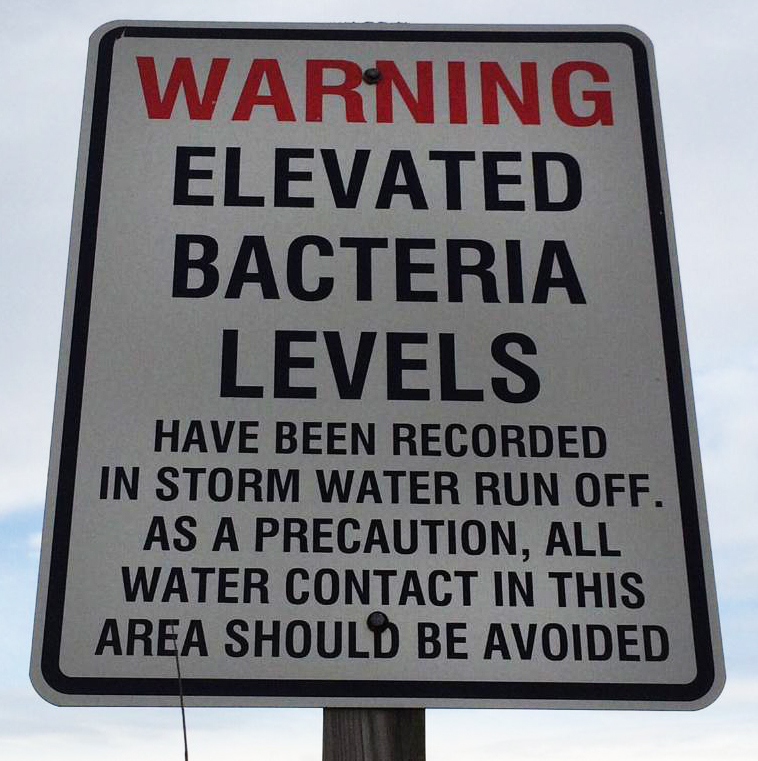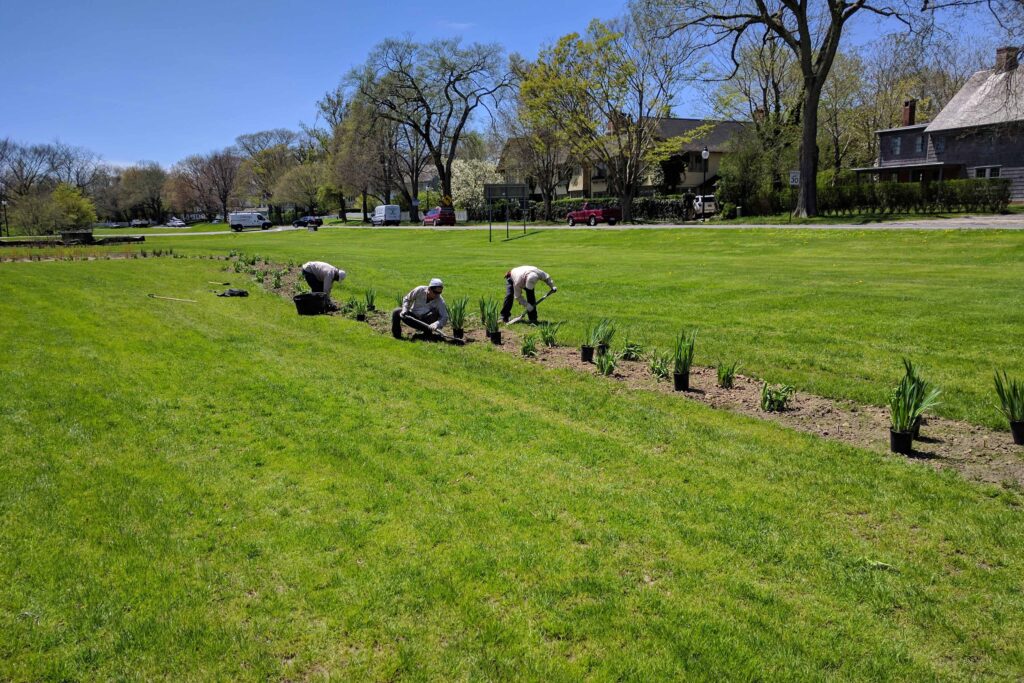Nature is a brilliant engineer and wetlands are one of the best examples. They absorb water, protecting us from floods and storms, and are some of the most productive ecosystems in the world; fixing carbon and producing biomass. Unfortunately, many wetland systems have been lost to development and with sea level rise, the buffering capacity of wetlands is becoming even more critical. Wetland restoration ecology is a well-established science and today new wetlands are being created where they are needed to absorb flood water or protect shorelines. A bioswale is a kind of engineered wetland.
At the north end of Georgica Pond where Montauk Highway (Route 27) crosses Talmage Creek there is a truck rest stop established by the New York State Department of Transportation (NYSDOT). Stormwater runoff from the highway flows downhill to the paved rest stop where it accumulates and flows into Georgica Pond. The problem with this scenario is that the stormwater washes contaminants with it into the pond. These contaminants include nitrogen, bacteria, oils, heavy metals, and other compounds. The Surfrider Foundation and the Gobler Laboratory of Stony Brook University have measured high levels of bacteria in Talmage Creek. The Surfrider data collection started in July 2015 and shows that bacterial counts exceed the U.S. Environmental Protection Agency recreational water quality health standard 48% of the time. This is a concern for the health of the pond, but also for the health of the public who use the site to launch kayaks, paddle boards, and canoes.

With funding from the Friends of Georgica Pond (FOGP), the Gobler Lab conducted microbial source (DNA) tracking of the bacteria found at the rest stop and other locations at the pond. Bacteria originating from humans, dogs/small mammals, deer, and birds were quantified. Dogs/small mammal and bird DNA were the most common at Talmage Creek with dogs/small mammal being closely tied to rain storms.

To address this problem, FOGP has formed a stakeholders group consisting of government representatives, citizens, and the NYSDOT. The first step is a study funded by FOGP to develop conceptual plans for remediating the runoff. The draft plan produced by the engineering firm Greenman-Pederson, Inc. has proposed a bioswale to help intercept the stormwater runoff along with some other steps to filter and intercept road runoff.
Bioswales have been installed all over the country and, when properly designed, they are very effective. The New York State Stormwater Design Manual includes bioswales (classified as green infrastructure) as an approved technique to remediate stormwater runoff. According to the Greenman-Pederson study, the proposed bioswale will reduce bacteria by greater than 70%.

One of the most visible bioswales created locally winds it way through the village green in East Hampton Village. Designed, created, and funded by a coalition of groups (Surfrider Foundation Eastern Long Island, The Ladies’ Village Improvement Society of East Hampton, NY, and Piazza Horticultural) the Village bioswale is not only helping absorb stormwater but is greatly appreciated for its spectacular display of flowering plants. The bioswale was planted with 100% native species which provide color, texture, and interest throughout the growing season.
The next phase of the bioswale at Talmage Creek, Georgica Pond will be to secure funding for the final engineering and then funding to construct the project. FOGP is very grateful to the Town of East Hampton, County Legislator Bridget Fleming, and State Assemblyman Fred Thiele for their enthusiasm and support of this project.
